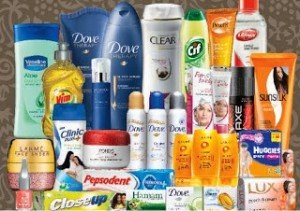It was the start of a new term at college and as always, it was time to spend a sizeable part of my pocket money in buying the things I need to ration in order to get my day started. (Shampoos, Pens, books etc.) So, I went to a local kirana store and ended up purchasing a Surf excel packet, a Lifebuoy soap and a Dove shampoo bottle among other things. On my way back, I realized that all the above products were manufactured under the same corporate header- HUL, but it felt like HUL did not want anyone to know of this fact. This got me thinking about why does a company as big as HUL, not find it prudent to launch these products under a single corporate brand rather than a product wise brand. On further analysis of this observation, I found that most of the companies as we know them follow two main strategies- Corporate Branding and Product Branding. Both the strategies have their own upsides and downsides but more importantly have a common goal- SUSTAINABILITY.

Let us first look at the product branding strategy. This is a strategy followed by almost all the major companies in the FMCG industry. Be it ITC, HUL or P&G, they all roll out their products under a different brand. Some say, this is done in order to hedge their risks, as one product’s failure does not directly impact the brand image of the other product. In other words, if the sales of the Dove shampoo were to drop owing to a product defect, it would not affect the sales of the lifebuoy soap as customers do not associate the two brands. However, this strategy has also been criticized by many market analysts as being very defensive. They argue that the companies which cannot guarantee benchmark customer satisfaction on a consistent basis are the ones which choose to take up this strategy. They are partly right in saying this. While on the one hand it is indeed a defensive strategy, on the other hand it is perhaps the only way to survive in this industry. The reason being the fickle-mindedness of the end consumer to subtle changes in product price and features is very high in this industry and hence a certain degree of experimentation is inevitable. The corporate branding strategy is on the other end of the spectrum. Whether it is the auto industry or the smartphone industry, this strategy is extensively used.
Whether it was the iPhone launch in 2007 or the scheduled iPhone 6 launch later this fall, they all have been and will be launched under the same corporate header- APPLE. The same goes for the various auto makers like Ford, Hyundai, and Toyota etc. So why is this strategy so appealing in this industry? What is so different about these industries? The answer again lies in the fact that producers in these industries strive to deliver a consistent quality to a customer who is not as easily swayed as is the case in the FMCG industry. Metrics like brand loyalty and Economies of scope find more meaning in this segment.
It is often seen that the power of an established brand works as a charm for the companies when they want to introduce a new product. A new car launched by Toyota comes with the Toyota product guarantee and hence it is that much easier to convince a customer that he is making the right choice.
But the picture is not all rosy. There are many downsides to this strategy. One of them is that, if one of the products fails to meet the consumer expectations or has defects which creates discontentment in the consumer fraternity, then the entire product line is hit. To site a very familiar example- The iPhone had always been a symbol of innovation and it was Apple’s star product. But, with every upgrade, the potential for innovation started coming down and when IPhone 5s was no longer seen to be as innovative as its predecessors along with the fact that many competitors had levelled Apple in this race, Apple’s sales fell drastically. Moreover, this trend was not restricted to the iPhone alone, it spread wide and fast affecting iPad and Macbook sales and Apple was displaced from the pinnacle of the most valuable companies list.
Another drawback of this strategy is that if the company wishes to change its brand statement and reposition itself, the transition might not always be a smooth one. For instance, if Maruti decides to venture into the luxury car segment, it might not be welcomed by the market with open arms as over the years, Maruti, as a brand, has established itself as a cost-efficient auto maker with no track record of providing a luxury experience to the customer.
Hence, whether it is product branding or corporate branding, ultimately it is the quality of the products that ensures the sustainability of the company. So if you are deciding on either of these strategies, be sure about weighing the pros and cons of each strategy and then deciding which of them suits your company the best.

































